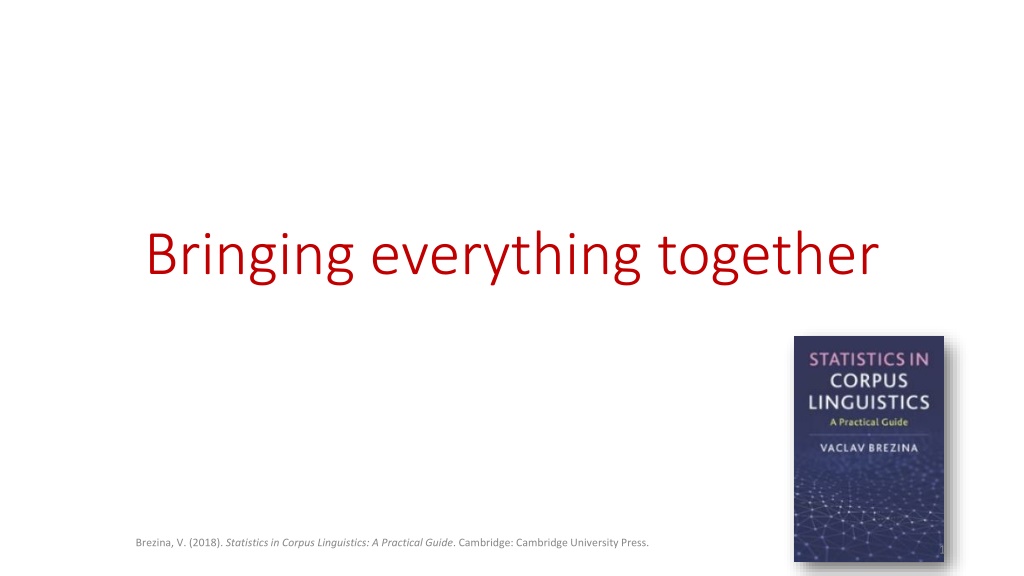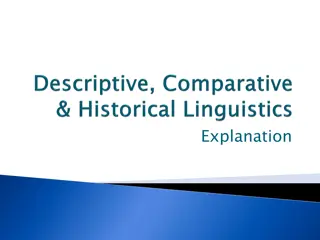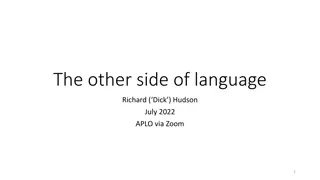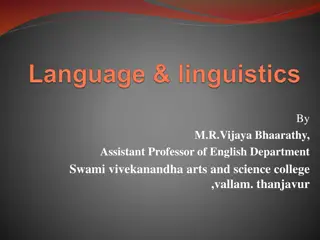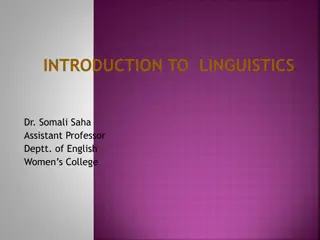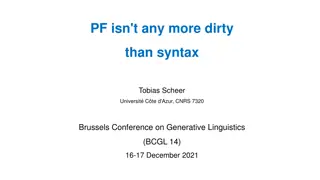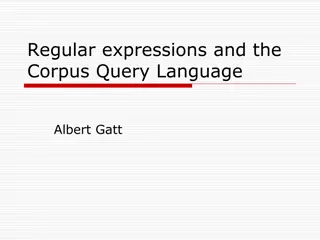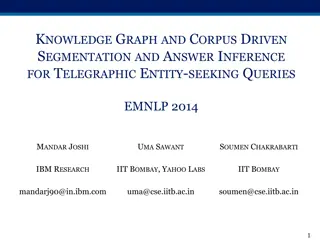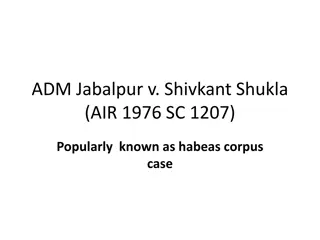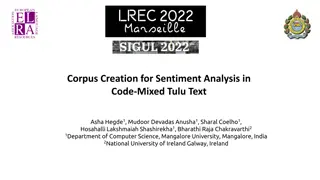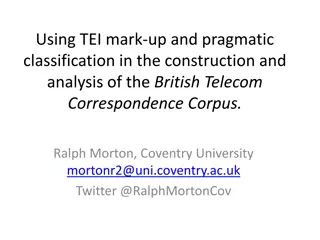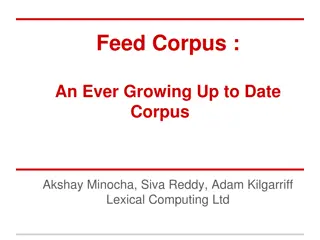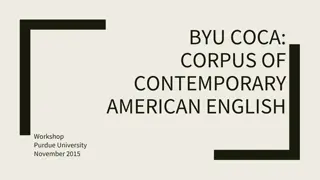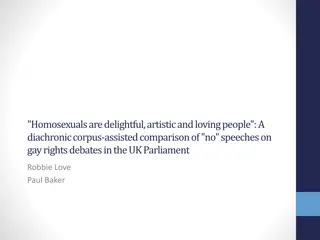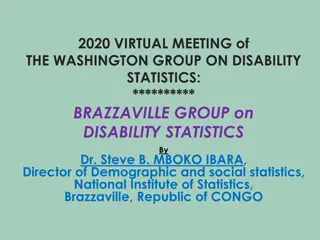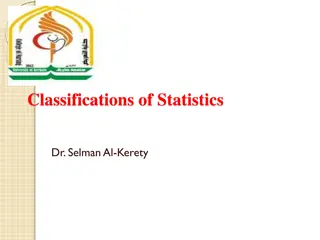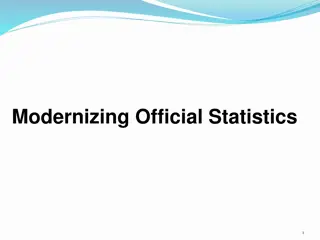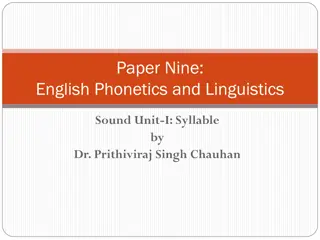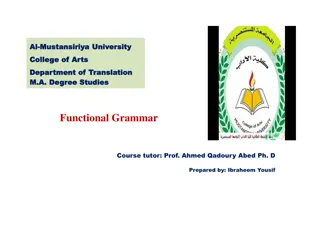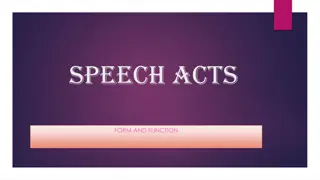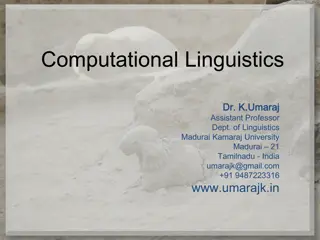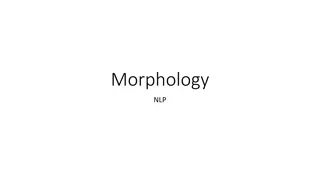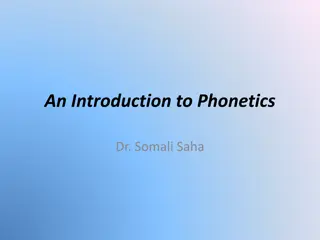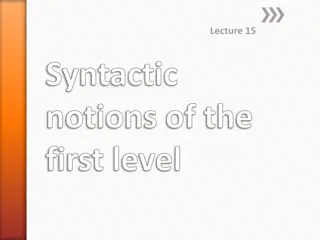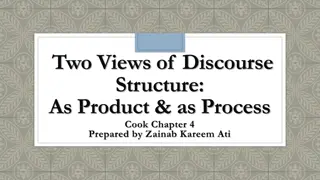Practical Guide to Statistics in Corpus Linguistics
This content provides insights on statistical thinking principles in corpus linguistics, emphasizing attention to detail, data quality, effect size calculation, visualization, and the interplay between statistics and linguistics. It also touches on key learnings, clarifications, and directions based on the information presented.
Download Presentation

Please find below an Image/Link to download the presentation.
The content on the website is provided AS IS for your information and personal use only. It may not be sold, licensed, or shared on other websites without obtaining consent from the author. Download presentation by click this link. If you encounter any issues during the download, it is possible that the publisher has removed the file from their server.
E N D
Presentation Transcript
Bringing everything together Brezina, V. (2018). Statistics in Corpus Linguistics: A Practical Guide. Cambridge: Cambridge University Press. 1
Think about and discuss 1. What is the most important thing you have learnt in this course? 2. Are there any things you would like to clarify? Brezina, V. (2018). Statistics in Corpus Linguistics: A Practical Guide. Cambridge: Cambridge University Press. 2
Ten principles of statistical thinking (A-J) A ATTENTION TO DETAIL: Pay attention when looking at corpus tool outputs, entering data into spreadsheets, copying data to research reports and during other types of low-level data processing. B BASICS FIRST: Start by familiarising yourself with the corpus and performing descriptive statistics. C CLARITY: The use of statistical procedures should be clear, transparent and well-motivated. Brezina, V. (2018). Statistics in Corpus Linguistics: A Practical Guide. Cambridge: Cambridge University Press. 3
Ten principles of statistical thinking (A-J) D DATA: Pay special attention to the quality of the corpus data and search procedures. E EFFECT SIZE: Calculate, report and interpret the size of the effect observed in the data. F FOLLOWING THE BEST PRACTICES IN THE FIELD: Critically review the statistical practice in the field and follow good examples. Brezina, V. (2018). Statistics in Corpus Linguistics: A Practical Guide. Cambridge: Cambridge University Press. 4
Ten principles of statistical thinking (A-J) G GAPHICS: Visualize data to identify patterns. H HIGHLIGHTING BOTH SIMILARITIES AND DIFFERENCES: Provide a balanced account of language use. I INTERPLAY BETWEEN STATISTICS AND LINGUISTICS: Provide robust statistical analysis that is grounded in linguistic and social theory. J JARGON: Use statistical terminology and notation where it helps express things clearly, but try to avoid unnecessary jargon. Brezina, V. (2018). Statistics in Corpus Linguistics: A Practical Guide. Cambridge: Cambridge University Press. 5
Think about and discuss Where would you go base on these pieces of info? Direction straight on and right straight on and left right and back straight on and right straight on and left Answer I don t know, actually maybe you need to just go straight on and then turn right. That s very easy. Follow this road and then turn left. Turn right and then retrace your steps all the way. I m absolutely sure. Sorry I m in a hurry: straight on and right. Person profile a person looking like a tourist Person 1 Person 2 a local shop keeper Person 3 a man in a mad hatter costume Person 4 a person exiting an office building a person walking a dog Person 5 The Globe is not far from here. I ve just walked past it. Walk down this road to the bridge, go down the stairs and left alongside the river. Brezina, V. (2018). Statistics in Corpus Linguistics: A Practical Guide. Cambridge: Cambridge University Press. 6
Answer Brezina, V. (2018). Statistics in Corpus Linguistics: A Practical Guide. Cambridge: Cambridge University Press. 7
Replication and meta-analysis Study 1 Corpus 1 Meta- analysis: answer RQ Study 2 Corpus 2 Study 3 Corpus 3 Brezina, V. (2018). Statistics in Corpus Linguistics: A Practical Guide. Cambridge: Cambridge University Press. 8
Meta-analysis step-by-step: overview 1) Identification of relevant studies. 2) Extraction of relevant pieces of information from the studies (coding). 3) Statistical synthesis. Brezina, V. (2018). Statistics in Corpus Linguistics: A Practical Guide. Cambridge: Cambridge University Press. 9
Meta-analysis step-by-step: identification of relevant studies Publication bias: underreporting of null results. Quality unpublished works. GIGO. Gender and pronouns Brezina, V. (2018). Statistics in Corpus Linguistics: A Practical Guide. Cambridge: Cambridge University Press. 10
Meta-analysis step-by-step: coding Brezina, V. (2018). Statistics in Corpus Linguistics: A Practical Guide. Cambridge: Cambridge University Press. 11
Meta-analysis step-by-step: statistical synthesis Brezina, V. (2018). Statistics in Corpus Linguistics: A Practical Guide. Cambridge: Cambridge University Press. 12
Think about and discuss You are preparing for a half marathon and want to evaluate the effect of the training. Before the training, you run 200 meters in one minute; after the training, you run 220 yards in the same amount of time. Did the training help? Brezina, V. (2018). Statistics in Corpus Linguistics: A Practical Guide. Cambridge: Cambridge University Press. 13
Answer 220 yards 201.2 meters > 1.2 meter improvement/minute. Half marathon: 21,098 meters or 23,073 yards. Overall improvement: 38 seconds. Brezina, V. (2018). Statistics in Corpus Linguistics: A Practical Guide. Cambridge: Cambridge University Press. 14
Effect size measures Effect: Effect: anything observable that is of scientific interest. ES measures in CL: ES measures in CL: quantify the observed linguistic variables and the differences and changes in their frequencies. Range of ES measures: Range of ES measures: can be converted to a common measure. Brezina, V. (2018). Statistics in Corpus Linguistics: A Practical Guide. Cambridge: Cambridge University Press. 15
Effect size measures mean 2 % change OR Cohen s d Effect size PR r MI-score, t-score, log Dice etc. r2 simple maths parameter, %DIFF Crammer s V Brezina, V. (2018). Statistics in Corpus Linguistics: A Practical Guide. Cambridge: Cambridge University Press. 16
Effect size measures (cont.) Input r Output Cohen sd Transformation/ Extrapolation 2? ? = 1 ?2 ? Cohen sd r ? = ?2+ 4 2 [similar group sizes] Cohen s d ?2 ? =2 1 ?2 log odds ratio [ln(OR)] Cohen s d ? =ln(??) 3 ? t-test t; n1; n2 Cohen sd ?1+ ?2 ?1 ?2 ? = ? one-way ANOVA F; n1; n2 Cohen sd ?(?1+ ?2) (?1 ?2) ? = Brezina, V. (2018). Statistics in Corpus Linguistics: A Practical Guide. Cambridge: Cambridge University Press. 17
Effect size measures: standard interpretation 2 ES measure r Cohen sd Crammer sV [2x2 table] Effect small medium large 0.1 0.3 0.5 0.3 0.5 0.8 0.01 0.06 0.14 0.1 0.3 0.5 Brezina, V. (2018). Statistics in Corpus Linguistics: A Practical Guide. Cambridge: Cambridge University Press. 18
Effect size measures: CL interpretation the in two randomly selected subcorpora of the BNC passives in academic writing vs. informal speech personal pronouns in speech vs. writing lovely in female vs. male speech 0.7 3.6 2.6 0 2 4 Cohen s d Brezina, V. (2018). Statistics in Corpus Linguistics: A Practical Guide. Cambridge: Cambridge University Press. 19
Things to remember Statistics helps us express quantitative information with precision and rigour. Meta-analysis provides statistical summary of multiple studies by combining their effect sizes. The results of meta-analysis can be visualised using a forest plot. To deal with inconsistent reporting of effect sizes, we can convert one effect size measure into another or extrapolate it. Standardised effect size measures can be understood in terms of the Probability of superiority. Effect size measures can be interpreted with the help of benchmark points, which show examples of easily imaginable linguistic effects and the corresponding values of common effect size measures. Brezina, V. (2018). Statistics in Corpus Linguistics: A Practical Guide. Cambridge: Cambridge University Press. 20
